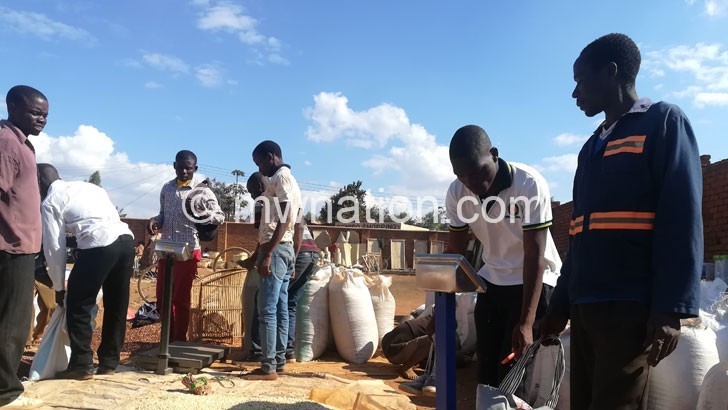Traders fault govt on maize prices
Grain Traders Association of Malawi says government’s decision to raise maize buying prices for the country’ strategic grain reserves has fueled a rise in retail maize prices on the produce market.
The association’s president Grace Mhango said traders are responding to the new prices, which are being offered to contract farmers.

“We are aware that prices have started rising, it has got nothing to do with looming hunger. The price rise is due to prices the National Food and Reserve Agency [NFRA] has offered cooperatives, who have been given contracts to deliver at K215 per kilogramme [kg],” she explained.
Retail prices for the maize staple have in recent months remained lower than the government-set minimum farmgate price set at K200 per kg on April 7 2020.
However, following the decision last week, maize prices have moved from an average of K170 per kg to about K220 per kg.
NFRA chief executive officer Nasinuku Saukira, while confirming that the agency has indeed started buying maize at the new set prices, said Ministry of Agriculture was better placed to give an explanation on the same.
Efforts to speak to Minister of Agriculture Robin Lowe and the ministry’s principal secretary Erica Maganga were futile as both could not be reached for comment.
However, in its paper titled Can a Maize Price Band Work in Malawi?, International Food Policy Research Institute (Ifpri) argued that price volatility together with operational challenges and high budgetary costs make it very difficult for Malawi to stabilise either retail or farmgate maize prices using a price band combined with a buffer stock.
Ifpri argued that Treasury needs to inject at least K100 billion annually in buffer stock maize purchases if prices of the stable commodity is to be stabilised.
Maize is an important crop in the country and, as part of the food component; it impacts the economy as it constitutes 45.2 percent of the Consumer Price Index (CPI), which is an aggregate basket of goods and services for computing inflation.
This means that any movement in the price of maize either way has a direct bearing on inflation.
Maize output has this year increased by 8.8 percent to 3.6 million MT from 3.3 million metric tonnes (MT) in 2018/19 growing season largely due to favourable weather conditions and an increased uptake of inputs by farmers, according to the Ministry of Agriculture. n





